市场资讯及洞察

New U.S. Sanctions on Russia as Putin Conducts Nuclear Tests
The U.S. has imposed new sanctions on Russia's two largest oil companies, Rosneft and Lukoil, after planned peace talks between Trump and Putin collapsed on Wednesday.
Oil prices spiked 3% after the announcement, with Brent crude hitting $64 per barrel.
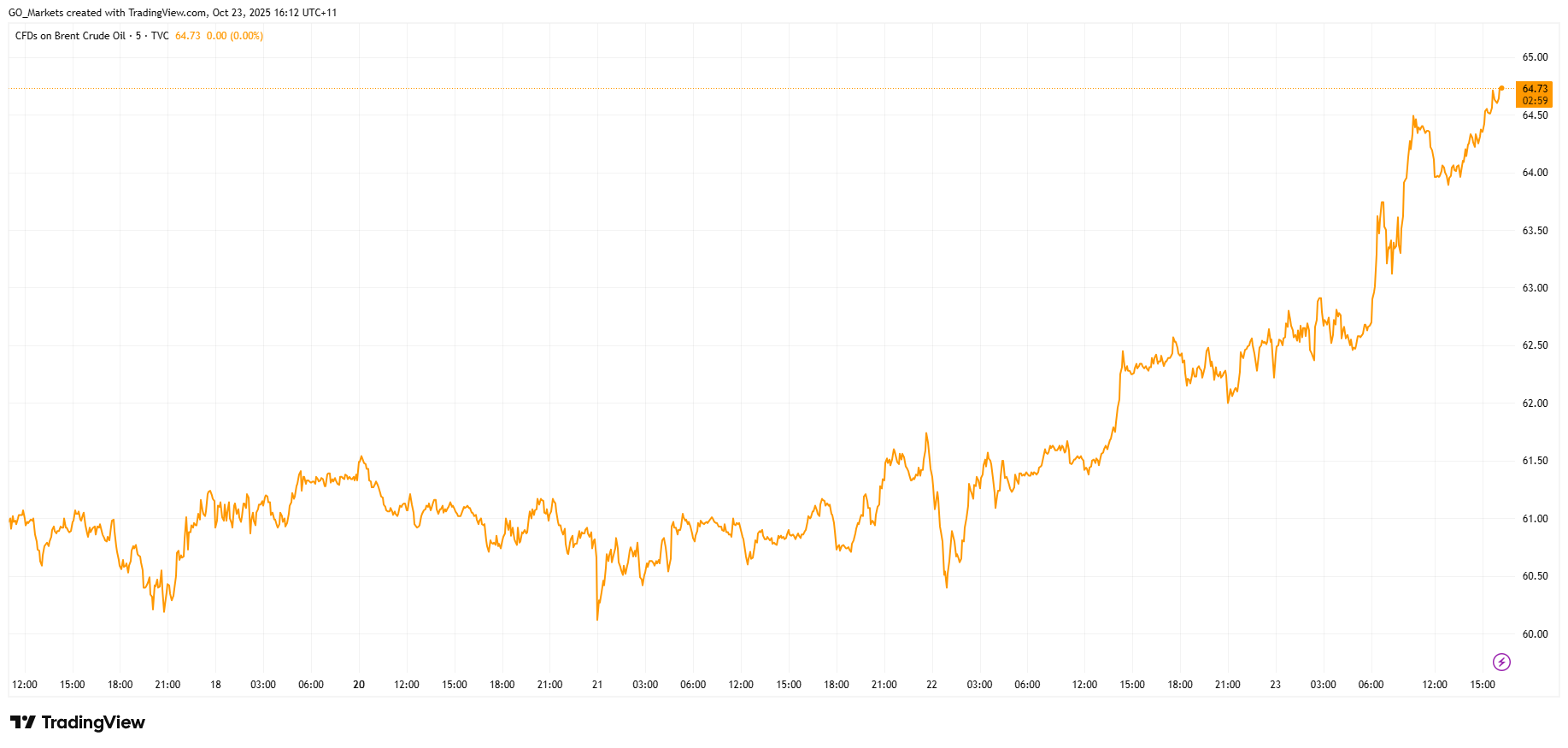
The targeted companies are among the world's largest energy exporters, collectively shipping about three million barrels of oil daily and accounting for nearly half of Russian production.
The sanctions build on recent European measures, as the UK targeted the same companies last week and the EU approved its own sanctions package on Wednesday.
In a show of force coinciding with the new sanctions, Putin supervised strategic nuclear exercises on Wednesday involving intercontinental ballistic missile launches from land and submarine platforms.
While the Kremlin emphasised these were routine drills, the highly coincidental timing is notable.
For markets, the key question now is whether secondary sanctions will follow, and if Trump’s enforcement remains strict. Traders will watch closely for any TACO signals that see Trump ease pressure in an attempt to restart negotiations.
Historic PM Wasting No Time on Celebrations
Sanae Takaichi made history this week as Japan's first female Prime Minister. The 64-year-old conservative leader, dubbed the "Iron Lady,” is already rolling out an aggressive policy agenda that could reshape Japan's economic and geopolitical position.
Her first major move is an economic stimulus package expected to exceed US $92 billion. The package includes abolishing the provisional gasoline tax and raising the tax-free income threshold from ¥1.03 million ($6,800), moves designed to put more money in consumers' pockets and battle inflation.
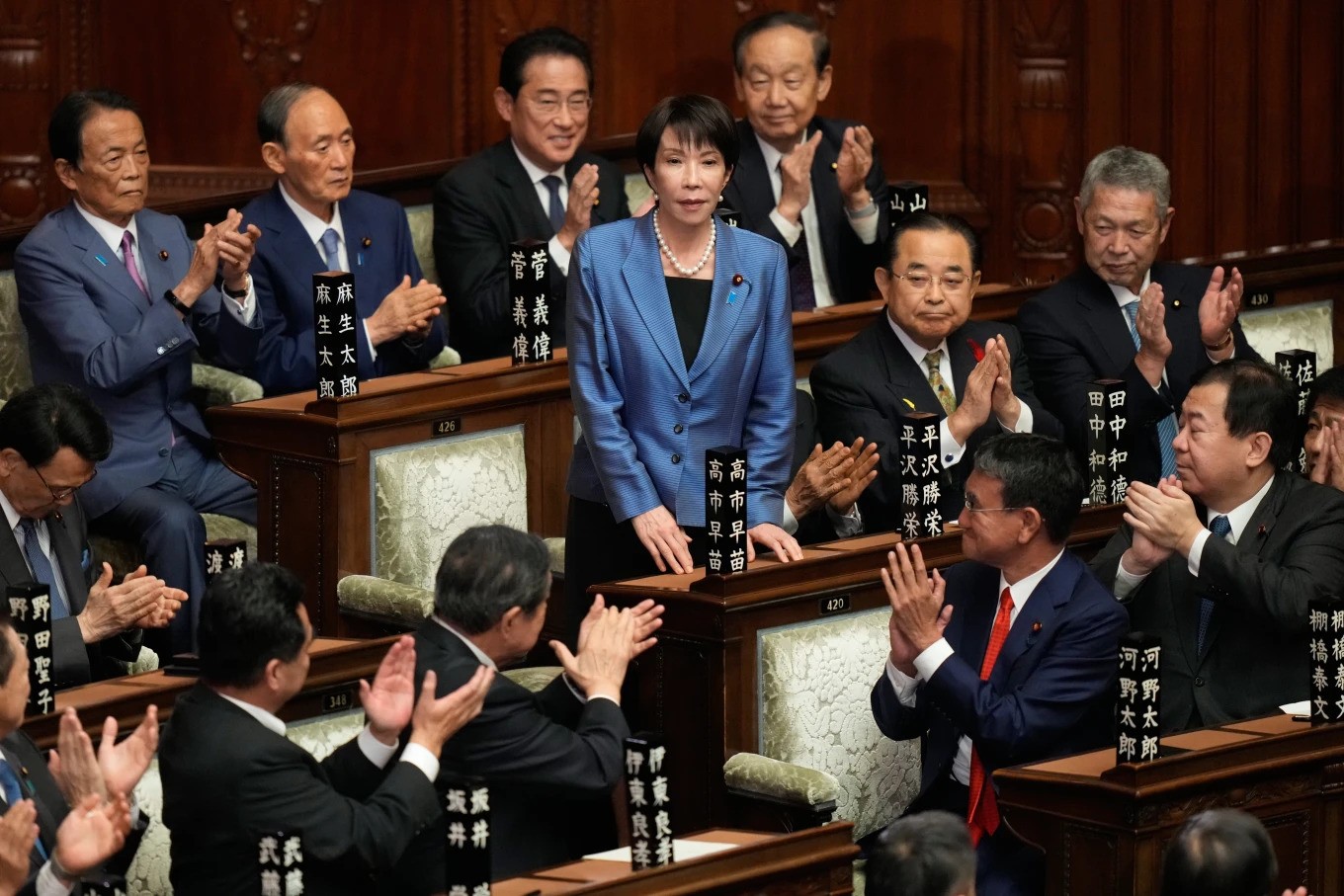
Her next move will come when Trump arrives in Tokyo next week, as the Japanese government is finalising a purchase package including Ford F-150 pickup trucks, US soybeans, and liquefied natural gas as sweeteners for trade talks.
Takaichi has campaigned on being a champion for expansionary fiscal policy, monetary easing, and heavy government investment in strategic sectors, including AI, semiconductors, biotechnology, and defence.
Critical Workers to Miss First Paycheck Due to Shutdown
The U.S. government shutdown is on the verge of creating a crisis for aviation safety, with 60,000 workers set to miss their first full paycheck this week.
These essential workers, who earn an average of $40,000 annually, already saw shortened paychecks last week. By Thursday, many will receive pay stubs showing zero compensation for the coming period, forcing impossible choices between basic necessities and reporting to work.
During the last extended shutdown, TSA sick-call rates tripled by Day 31, causing major delays at checkpoints and reduced air traffic in major hubs like New York — disruptions which are directly attributed to pressuring the end of the previous shutdown.
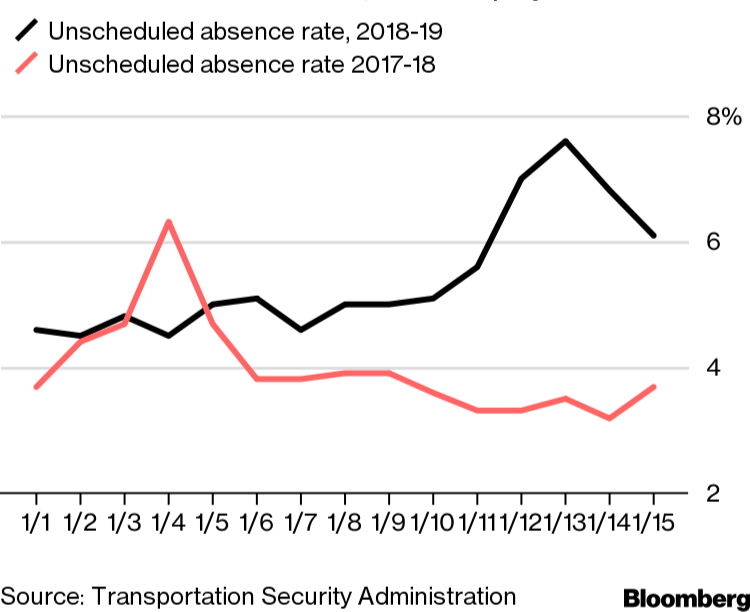
The National Air Traffic Controllers Association warns that similar pressures are building, with many workers soon to be facing a decision between attending their shift or putting food on the table.
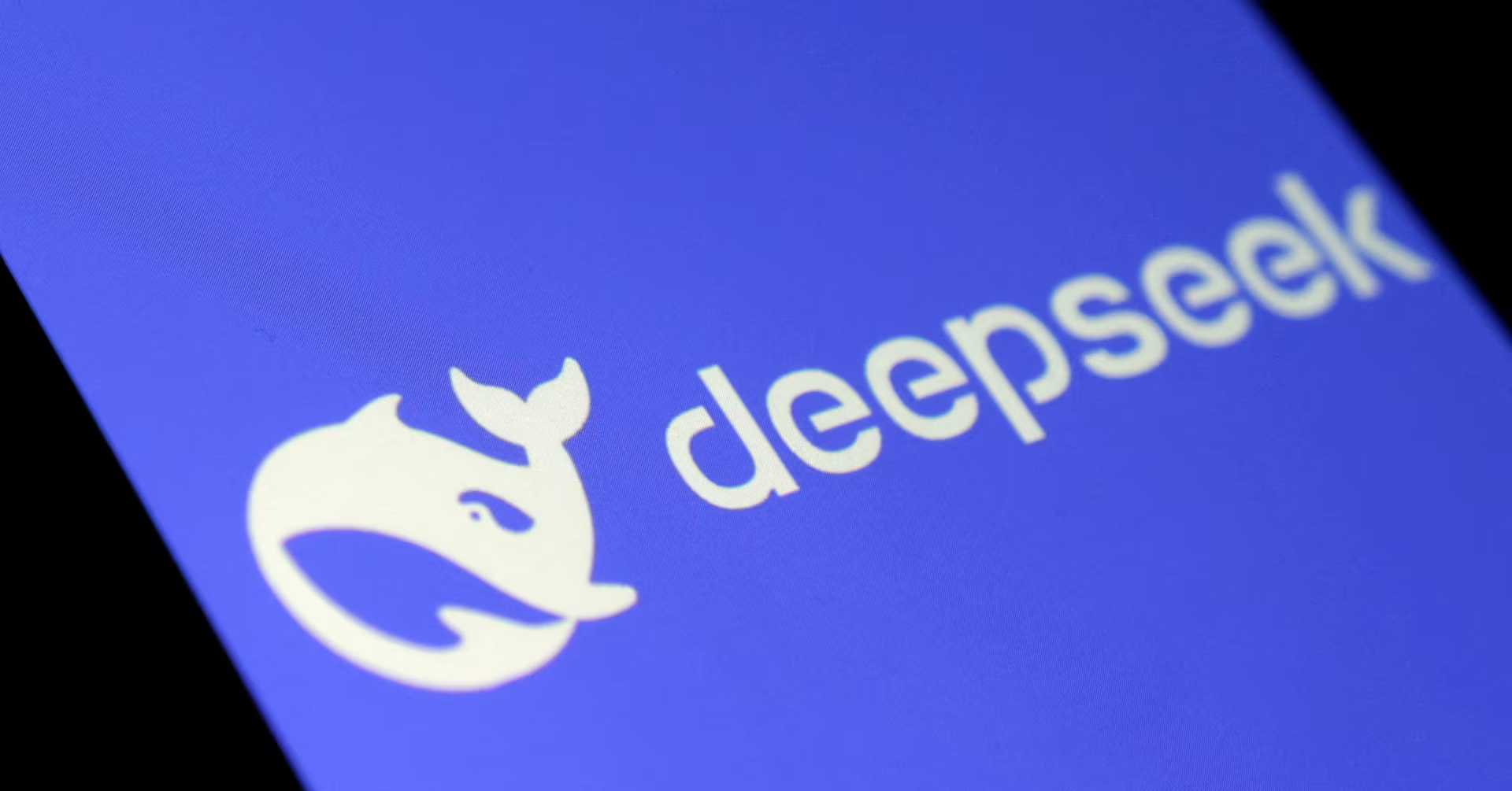

Since writing our Thematic paper for 2025 two of the four major themes have already shook markets in 2025. One has been the inauguration of Donald Trump as president of the United States of America and he nationalistic policies the second is the AI revolution taking a massive left hand turn. With the release of DeepSeek, the AI story may actually become the biggest theme of the year (big call considering it's still January).
We also need to rethink demand and the flow of funds in the wake of DeepSeek R1 disruption. Because if open-source DeepSeek R1 model does deliver performance comparable to OpenAI’s o1 reasoning model at a fraction of the cost (VentureBeat, Jan 20), it raises critical questions for not just AI, but periphery players in the AI chains as well. Here’s why: DeepSeek R1 is reshaping investor perceptions of the AI compute investment cycle.
Reports suggest that the model achieved competitive performance using significantly fewer computing resources and lower inference costs. These efficiency gains have cast doubts on the future scale of AI semiconductor and equipment investments, leading to selloffs across semiconductor stocks. Look at NVIDIA, Meta and closer to home NextDC and the like.
We also know that in China, DeepSeek v3 has already driven AI compute cost deflation. The R1 model leverages advanced techniques like multi-head latent attention (MLA) and mixture of experts (MOE), enabling more efficient training by breaking workloads into smaller parts. This is something o1 has only just begun doing – but at a higher cost load.
While these innovations may not apply universally to all models, they signal a shift that could impact global AI training strategies. Now the caveat the tech boffins point out here is that the greater training efficiency is unlikely to reduce overall compute spending in the near term, as improvements typically fuel more inference demand. But and it is a but, economies of scale always come home to roost in the end.
The consumer will benefit – the investor needs to get picky – who is going to lead and who is going to fall by the wayside? Lets look at the Tech Gorillas like Amazon, Google, and Meta, DeepSeek R1’s efficiencies create a mixed outlook. While these firms develop proprietary models it's important to remember that they also monetise AI services through platforms like Amazon Bedrock and Google Vertex.
Lower training costs could reduce operating and capital expenditures, boosting profitability. Amazon benefits from its partnerships with external developers. Google, meanwhile, leverages its Gemini model for growth.
Meta appears best positioned, as its Llama model generates minimal direct revenue, while its announcement of a 54%-66% year on year increase in capex to $60-$65 billion in 2025 demonstrates its commitment to scaling AI capabilities. This follows news of the Stargate project, which is estimated to add $100 billion in incremental cloud-related capex. These moves underscore that demand for high-performance data centres remains robust, even as cost-efficient AI models emerge.
So what about the hardware developers like NVIDIA (NVDA), Broadcom (AVGO), and Marvell (MRVL) that have been savaged by DeepSeek’s cost efficiencies? While concerns about reduced training investment persist, long-term demand for AI compute remains robust and one player will not be enough to change that. Training requirements, particularly for inference workloads, are expected to drive growth over the next 2-3 years and no model as yet can do that without increased hardware.
The question will be margins – will hardware margins get squeezed from cost efficiencies? Then there is the memory sector, DRAM demand remains steady despite short-term pressures. TSMC, a critical player in AI accelerators, has also faced declines but remains integral to the semiconductor supply chain.
So, no real change here from DeepSeek. Where does this all leave us? The emergence of cost-efficient AI models like DeepSeek R1 introduces both opportunities and risks.
Yes, declining compute costs have mixed implications for the tech sector. On one hand, they alleviate margin pressures for software companies grappling with expensive AI features, potentially accelerating AI integration across product lines. But the risk to this is, lower barriers to entry could intensify competition from agile AI startups, challenging incumbents.
In short these innovations could reshape AI economics, the sustained demand for robust infrastructure, driven by broader AI adoption and multi-cloud trends are likely to overawe the negatives for a positive long-term outlook. Thus investors should focus on companies well-positioned to benefit from these shifts while remaining cautious of near-term volatility.


热门话题
澳洲小长假结束,金融市场却变了天。幻方和Deepseek创始人梁文峰昨夜击溃了华尔街资本堆叠的AI,幻方量化陆政哲用一句拗口的话诠释了博大精深:热爱决定相信,专注带来复利。是的,这个低调的团队用不到6百万美金的浇灌和不到三个月的测试创造的Deepseek追上了美国科技巨头们动辄上百亿美元花费数年堆叠起来的ChatGPT,这是一场美国对华芯片出口限制下被迫弯道超车产生的科技变革。倒不是说Deepseek有多完美,而是高效低价算法加上非顶级芯片造就的AI模型竟然可以跟顶流AI模型扳手腕,那么这样的方法应用到顶级芯片和金钱堆叠模型下的效果又会是怎样的呢?AI基础硬件的成本是否会出现断崖式下降,这是人类的福音,确是资本的噩梦。因为英伟达不会再按照剧本中安排的那样每年再赚那么多钱了,OpenAI的估值也会被打骨折。由此,我们从周一的美盘看到了真实的资本反应。

周一美盘被科技板块拖累,标普跌超1.4%;道指强势上涨0.65%展示美国经济强势;而高科技代表纳指收跌3.07%,盘前期货跌幅一度超过5%。英伟达跌近17%创造美股市值蒸发单日记录,也让出了市值排名第一的王座。资本涌入AI ASIC,美系AI和思维定势上与大陆对立的台系AI相关股暴跌,台积电跌超13%,芯片定制大佬博通也受到波及跌超17%,“小英伟达”ALAB跌超28%。年初提到的AI应用层部分股票逆市上涨,Adobe小涨0.74%,CRM涨近4%,SNOW也收下小涨。2025年AI的应用将全面超越AI基础层的回报,这个判断昨晚表现得尤为明显。另外遭罪的无疑是暴涨数日的核电板块了,由于AI算力对电力需求而暴涨的核电股,在Deepseek带来的极高效运作下被解读为短期电力需求被预判过度了,核技术股均跌超20%,美铀均跌超10%,今天澳铀也将遭遇血洗。上周中本人一波止盈离场既是巧合也是对本周财报的悲观预判,没想到周一竟然能躲过一劫,正好等待回调后的抄底。美元指数小幅走低,金价跌超1%回到2740平台,油价继续大跌,美油回到了73平台,依然处于去年宽幅震荡区间。恐慌指数因标普500大跌而暴力拉升,盘间一度涨近50%,期货收盘收涨近7%。外汇方面日元走势较强,美元保持平稳,但盘间经历了暴涨暴跌,美元人民币变动不大。免责声明:GO Markets 分析师或外部发言人提供的信息基于其独立分析或个人经验。所表达的观点或交易风格仅代表其个人;并不代表 GO Markets 的观点或立场。联系方式:墨尔本 03 8658 0603悉尼 02 9188 0418中国地区(中文) 400 120 8537中国地区(英文) +248 4 671 903作者:Xavier Zhang | GO Markets 高级分析师


Achieving long-term success in trading requires more than just knowledge and technical skills. It depends on building a foundation of mindset, behaviours, and self-awareness. This foundation is built on three critical drivers: Trading Confidence and Reliability, Trading Self-Relevance, and Trading Locus of Control.
These drivers work together to create a framework for sustainable growth and success in the market. However, failing to implement these drivers can lead to frustration, inconsistency, stagnation, and trading outcomes that fall short of what may be possible for you. In this article we explore these drivers in detail, enriched with definitions, examples, and insights into the consequences of neglecting them. 1.
Trading Confidence and Discipline Definition: Confidence is the belief in your ability to succeed and overcome challenges, while reliability is about creating consistent, dependable outcomes through your actions and systems. Confidence is the psychological pillar that allows traders to operate with clarity and conviction, even in volatile markets. This IS the KEY ISSUE in trading discipline.
Confident traders invariably are disciplined traders. This attribute needs work, being cultivated through deliberate practice and the accumulation of small wins over time. Core Concepts: Confidence in Your Ability to Take Action: What it means: This is about trusting in your capability to take the necessary steps, no matter how small or challenging, to achieve positive outcomes.
It requires the ability to see yourself as an active participant in your success, rather than a passive observer. This confidence grows through persistence and a willingness to learn from setbacks. You need to believe that even if you don’t have all the answers today, you are equipped to figure things out over time.
Example: A trader analyses their losses to identify mistakes and refine their approach, developing resilience to re-enter the market with improved strategies. Consequences of Neglect: Without confidence, traders may hesitate to take action or abandon trades prematurely, missing out on potential gains and learning opportunities. Confidence in the Importance of Taking Action and then Testing: What it means: Recognizing the value of consistent effort and the power of experimentation is essential in trading.
Small, deliberate actions, such as testing new strategies or refining old ones, provide insights that build trust in your systems. Testing allows you to bridge the gap between theory and application, proving to yourself that what you do matters and can lead to improved results. Example: A trader refines a new risk management rule on a demo account, building trust in its reliability.
Consequences of Neglect: Neglecting testing can lead to impulsive decisions based on unverified strategies, increasing the likelihood of inconsistent or poor outcomes. Confidence in Your Trading Systems: What it means: Believing in your system means trusting the process you’ve developed, knowing it has been built on solid foundations, and understanding that, over time, it is capable of delivering reliable results. This confidence doesn’t mean blind faith—it’s about the discipline to stick to your system because you’ve put in the work to validate it.
Example: A trader follows a trend-following system backed by thorough back testing and evidence in live markets of positive outcomes. Consequences of Neglect: Without trust in your system, you may second-guess trades, frequently change strategies, or fail to commit to a plan, resulting in erratic performance. The link between this and the ability to be disciplined is undeniable.
Believing in the Impact of Learning and Action: What it means: Understanding that your effort to grow and take deliberate action is the engine that drives success. This belief empowers you to view setbacks as opportunities for growth, rather than roadblocks. It shifts your focus from outcomes solely to recognising the important processes, enabling you to learn and improve continually.
Example: A trader uses mindfulness techniques to reduce emotional errors, significantly improving decision-making. Consequences of Neglect: Failing to learn from mistakes or take deliberate action can result in repeated errors and a lack of meaningful progress. Key Takeaway: Confidence and, subsequently, discipline are essential for building consistency.
Without them, traders are likely to operate reactively, undermining their potential for long-term success. 2. Trading Self-Relevance Definition: Trading self-relevance is the alignment of your trading activities with your values, goals, and purpose. It ensures that trading is not just an activity, but a meaningful pursuit tied to your identity and aspirations.
Core Concepts: Purpose: What it means: Having a clear “why” behind your trading journey is about understanding the deeper motivation that drives your actions. Purpose provides the emotional anchor that keeps you steady, even when the market becomes unpredictable. It transforms trading from a task into a mission, connecting it to something personally significant.
Example: A trader pursuing financial independence views trading as a means to an end, which keeps them motivated. Consequences of Neglect: Without a strong purpose, trading can feel aimless, leading to a lack of discipline, motivation, and ultimately, poor results. Level of Importance: What it means: Treating trading as a priority requires committing the time, energy, and focus necessary for improvement.
It involves recognizing the importance of consistent effort and giving trading the same respect as any other profession or life goal. Example: A trader allocates specific hours for market analysis, reflecting their commitment. Consequences of Neglect: Treating trading as a low priority can lead to inconsistent effort, incomplete preparation, and missed opportunities.
Developmental Evidence: What it means: Monitoring your progress and recognizing improvement is key to maintaining motivation. Evidence of growth reinforces that your actions are effective, encouraging you to stay the course. It creates a feedback loop where success builds confidence and confidence drives further effort.
Example: A trader reviews their journal weekly to identify profitable patterns. Consequences of Neglect: Without tracking progress, traders may lose confidence, fail to learn from their experiences, and struggle to refine their approach. Key Takeaway: Self-relevance connects your trading to your identity and goals.
Neglecting this alignment can lead to a lack of direction and reduced motivation to improve. 3. Trading Locus of Control Definition: Locus of control refers to your belief about whether outcomes are determined by your own actions (internal) or by external factors (external). Core Concepts: Internal Locus of Control (ILOC): What it means: Believing that your outcomes are shaped by your decisions, behaviours, and preparation.
This mindset puts you in the driver’s seat, enabling you to take responsibility for your actions and their consequences. It empowers you to adapt, improve, and proactively address challenges. Example: A trader reviews losses to identify mistakes and improve, rather than blaming external factors.
Consequences of Neglect: Without an ILOC, traders may externalize blame, failing to take responsibility for their growth and repeating the same mistakes. External Locus of Control (ELOC): What it means: Attributing outcomes to luck, market conditions, or other external influences. This mindset often leads to feelings of helplessness, as you perceive success as being outside of your control.
Example: A trader blames sudden news events for losses without analysing their own decisions. Consequences of Neglect: An ELOC mindset often results in a lack of accountability, leaving traders feeling powerless and unmotivated. Take charge of what you can control!
Here are the actionable aspects within your control to make sure that your locus of control remains primarily internal: What You Learn: Continuously improving knowledge through deliberate effort. Your Systems: Refining strategies with evidence and adapting to market changes. Your Trading Time: Managing when and how much you trade.
Performance Measurement: Evaluating progress using clear metrics. Execution: Maintaining discipline in trade management. Permission Not to Trade: Knowing when to step back.
Consequences of Neglect: Failing to focus on what you can control leads to frustration, emotional decisions, and a reactive mindset. Key Takeaway: An internal locus of control empowers you to take responsibility for your outcomes, fostering resilience and proactive growth. Summary - Bringing It All Together Ultimately, these three drivers— Trading Confidence and Reliability, Trading Self-Relevance, and Trading Locus of Control —must work in harmony to achieve lasting success.
They create a foundation for continuous growth, adaptability, and resilience. Neglecting these principles often results in frustration, stagnation, and missed opportunities. By adopting these drivers, you align your trading journey with a mindset built for success.


热门话题
2025年1月20日,特朗普重返白宫,其主张的“美国优先”政策不仅引发了全球资本市场震荡,更可能重塑美国金融监管格局。其中,银行业的核心监管框架——巴塞尔协议III的“终局”规则(Basel III Endgame)成为焦点,特朗普政策与巴塞尔协议实施之间的复杂博弈也就此展开。巴塞尔协议III自2008年金融危机后推出,旨在通过提高资本充足率、优化风险权重计算等方式增强银行业抗风险能力。2023年,美联储提出“终局”规则草案,要求大型银行额外增加资本金。当时,这一提案遭到银行业强烈反对,认为其过度严苛且会削弱美国银行的国际竞争力。按原提案,全球系统重要性银行(G-SIBs)的普通股一级资本需增加9%,而资产规模超过2500亿美元的银行面临更严格资本要求。而美国银行业普遍已经持有超额资本,根据德勤2025年最新报告,截至2024年第二季度,区域性银行的商业地产贷款占风险资本比例高达199%,远超大型银行的54%,凸显其资本压力。

特朗普政府历来主张放松金融监管。其政策团队已表态支持修订巴塞尔协议III规则,降低资本要求。2024年9月,美联储副主席Michael Barr宣布新提案,取消部分“镀金”标准(即严于国际规则的要求),并保留分级监管模式。这些调整直接回应了银行业的诉求,例如:1.住宅地产和零售业务风险权重下调,减轻中小银行负担;2.税收抵免权益融资风险权重降低,鼓励绿色能源等政策支持领域;3.操作风险资本计算简化,按净收入而非总收入计量。但是,特朗普的政策纲领与巴塞尔协议的实施方向还是存在多重冲突,主要体现在以下三方面:1. 贸易保护主义 vs 全球监管协调特朗普主张对进口商品征收10%基准关税,对个别国家征收更高关税,并推动制造业回流。施罗德报告指出,这类政策可能推高企业融资成本,间接影响银行信贷质量。与此同时,巴塞尔协议要求各国监管标准趋同,但美国若单方面放宽规则,可能引发“逐底竞争”。例如,欧盟已推迟实施巴塞尔3.1至2026年,英国则推迟到2027年1月1日,英格兰银行审慎监管局(PRA)修订后的规则对资本要求影响低于1%,并强调“公平竞争环境”,暗示可能跟随美国调整。

2. 利率政策干预 vs 银行业净息差压力特朗普曾批评美联储加息政策,主张更“宽松的货币政策”。市场预计2025年美国联邦基金利率或降至3.5%-3.75%,净息差(NIM)预计从2024年的3.15%下滑至3%。利率下行虽可能刺激抵押贷款需求,但存款成本高企(2025年计息存款成本预计达2.03%)将挤压银行利润。若特朗普施压美联储进一步降息,银行业需在贷款定价与存款争夺间寻找新平衡。3. 国内优先战略 vs 小银行生存困境特朗普强调“本土经济优先”,利好以国内业务为主的小型银行。美国小盘股(如罗素2500指数成分股)76%收入来自本土,而标普500公司仅59%。区域性银行因商业地产风险敞口集中,2025年净核销率或升至0.66%,创十年新高。若特朗普政府推动减税(如延长2017年税改)并放松社区银行监管,或为小银行注入喘息空间。特朗普的回归,标志着美国金融监管从“风险防范”转向“增长优先”,美国对巴塞尔协议的调整可能加剧国际监管分化。巴塞尔协议III的“终局”规则修订,既是政治博弈的结果,也是银行业自救的契机。然而,放松监管的代价可能是长期风险的积累——若经济衰退与信贷质量恶化叠加,2008年的危机阴影或将重现。对于全球银行业而言,如何在合规与盈利间找到动态平衡,将是未来十年的终极命题。免责声明:GO Markets 分析师或外部发言人提供的信息基于其独立分析或个人经验。所表达的观点或交易风格仅代表其个人;并不代表 GO Markets 的观点或立场。联系方式:墨尔本 03 8658 0603悉尼 02 9188 0418中国地区(中文) 400 120 8537中国地区(英文) +248 4 671 903作者:Christine Li | GO Markets 墨尔本中文部


热门话题
早在2020年特朗普第一个任期内,美国就提出了关于对TikTok的限制措施,到2023年美国举行针对TikTok的听证会,再到2024年拜登直接签署法案要求字节跳动在2025年1月19号前剥离TikTok的美国业务,也就是要求字节跳动将TikTok业务出售给非中国企业,否则“不卖就禁用”,TikTok这一路走来不可谓不坎坷。现在时限已到,对于拜登政府留下的这个“烂摊子”,特朗普上任后却是没有立刻执行,而是宣布了再给TikTok75天的时间。后续会怎么发展,以及TikTok事件这一路走来都给社会各界造成了什么影响,我们今天就一起来看一看。

特朗普在第一任期内,就多次强调TikTok对国家安全的潜在威胁,要求其美国业务出售给本土企业。拜登执政期间也多次针对TikTok做出了严厉措施。如今,特朗普重新掌权,延续了对中国科技公司的强硬态度,但提出了“75天整改期”的方案,为TikTok提供了一定的喘息空间。那为什么特朗普作为第一个坚定提出这一论点的人,反而在四年后的今天选择了“各退一步“,可能是有以下几个方面的考量:首先是提出这一限制政策的初衷,出于对技术和数据的敏感性,美国担心TikTok收集的用户数据可能被用于国家安全目的,所以早在限制法案提出时,尽管还没有全面限制。但美国就已经严厉禁止了联邦人员在政府发放的设备上使用TikTok和其他中国社交平台。而为什么现在特朗普的态度缓和了,则是考虑到了用户与市场的依赖性,现在TikTok在美国的月活跃用户数超过1.5亿,其内容生态已深度融入年轻人的日常生活,彻底禁令很可能引发社会反弹。尽管特朗普给了TikTok喘息的机会,但是前段日子随着拜登政府给的1月19号期限越来越近,TikTok面临的不确定性使得大量美国用户开始转向中国其他社交媒体,例如小红书等。数据表明自2025年1月以来,小红书的美国用户增长了约45%,这些用户不仅给这类社交媒体带来了全球化内容的多样性,也凸显了中国社交媒体在海外的竞争潜力。尽管有很大一部分的用户涌入了中国的市场,但TikTok的潜在禁令也使美国科技企业获得了发展短视频业务的窗口期。例如,Instagram的Reels和YouTube的Shorts近期获得了更多市场份额。Meta报告显示,其短视频用户日均观看时间增长了23%,显然这一趋势受益于TikTok用户的不安定情绪。

TikTok事件的反复折射出中美科技脱钩的加速趋势。美国政府对中国科技企业的严格审查,以及TikTok的整改要求,都表明了在核心技术领域,两国间的合作信任度进一步降低。这将影响其他中国科技公司在美业务的发展前景,例如阿里巴巴和腾讯这些企业。那说完TikTok一路走来的经历和现在面临的局面,未来的TikTok就只面临了两种结局:做出整改满足限制法案的要求,特朗普放宽限制,TikTok在美国获得批准;或者没有整改,特朗普全面禁止。如果说TikTok不管是由于自己整改还是特朗普放宽政策得到了在美国继续发展的批准,那么在很大程度上会帮助市场反弹和提振信心,TikTok在美业务的稳定性将使用户信任恢复,广告商也会继续投入其生态系统。并且这一政策放宽可能被视为对中国科技企业的一种默许,从而鼓励更多中国企业探索海外市场,加速中国社交媒体全球化。但对于美国本土的短视频市场会带来进一步的竞争加剧,挑战Meta,Youtube等企业的市场份额。那如果TikTok继续拒绝整改,而特朗普态度也依旧坚定,那么TikTok在美国被全面禁止也会带来一系列的后果。就比如持续当前用户转移的趋势,用户转移到中国其他社交媒体或美国本土平台,在这一过程当中美国民众尤其是青少年群体的反抗情绪也会进一步被激化。并且美国如果“不留情面”对中国在美企业全面打压,那中国市场也有可能做出反制措施。比如限制美国科技公司例如苹果等企业的在华业务,鼓励中国本土的大力发展和美国企业形成竞争制衡的关系。TikTok事件不仅仅是一家企业面临政府指控的问题,它反映出了中美之间的紧张关系和两国之前对立的信息科技发展布局,而目前来看TikTok能否突破困境,将是决定全球社交媒体竞争的下一个关键节点。免责声明:GO Markets 分析师或外部发言人提供的信息基于其独立分析或个人经验。所表达的观点或交易风格仅代表其个人;并不代表 GO Markets 的观点或立场。联系方式:墨尔本 03 8658 0603悉尼 02 9188 0418中国地区(中文) 400 120 8537中国地区(英文) +248 4 671 903作者:Yoyo Ma | GO Markets 墨尔本中文部


热门话题
特朗普于本周一正式就职后,金融市场出现了不寻常的双向调整,不仅美元持续走软,美股也陷入了下行趋势。通常情况下,美元和美股的走势是呈现反向关系的,此次同步下跌究竟为何?投资者应如何应对?今天我们来讨论一下:

首先,美元下跌的一大因素是美联储的加息周期已接近尾声,市场对美联储可能暂停甚至降息的预期不断升温,这使得美元的利率优势逐渐减弱。其次,美国的经济增长表现疲软,零售销售和制造业活动数据未能显示出强劲的增长势头,且随着特朗普关税政策的临近,市场对未来美国经济的表现持谨慎态度。这些因素加剧了美元的下行压力。此外,尽管美元历来被视为避险资产,但当前市场的避险需求有所变化,资金流向黄金和债券等其他避险工具,进一步削弱了美元的吸引力。

但是美股为何会同步下跌?一般来说,当美联储放缓加息步伐时,股市会迎来利好消息。然而,当前美股却呈现出疲软的表现,主要原因有二。首先,企业盈利预期的下滑影响了市场情绪。持续的高利率环境提高了企业的融资成本,压缩了企业的利润空间,在2024年科技股独占鳌头的前提下,盈利预期下调,导致了大量投资者的抛售。其次,市场开始对美国经济衰退的风险产生担忧。尽管加息步伐放缓,但经济增长的放缓甚至衰退的可能性依然让投资者感到不安,这种不确定性促使资金暂时撤出股市,寻找其他更稳妥的投资机会。此外,债券市场的回暖也同样会加剧美股的跌势。
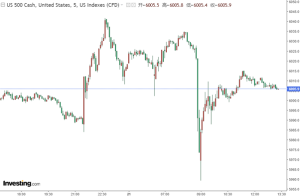
美元和美股的同步下跌意味着市场上的资金流动及风险偏好正在转变。避险资金正在重新分配,黄金和国债重新成为投资者的首选,美元不再是唯一的避风港,部分资金可能开始寻求全球化配置,转向经济前景更为乐观的非美市场。在这种市场环境下,投资者应采取灵活的应对策略。首先,黄金等避险资产通常在美元下跌时上涨,可以关注黄金相关产品。其次,大宗商品如原油、铜等的价格受美元影响较大,美元的疲软可能推动这些商品的价格上涨,可以适当关注这些领域的机会。与此同时,如果美联储加息预期不变,高等级债券将变得更加具有吸引力,投资者可以考虑增加债券的配置,以实现稳定收益。最后,也可以适当关注欧元区及亚太市场的投资机会。免责声明:GO Markets 分析师或外部发言人提供的信息基于其独立分析或个人经验。所表达的观点或交易风格仅代表其个人;并不代表 GO Markets 的观点或立场。联系方式:墨尔本 03 8658 0603悉尼 02 9188 0418中国地区(中文) 400 120 8537中国地区(英文) +248 4 671 903作者:Sylvia Qin | GO Markets 悉尼中文部

